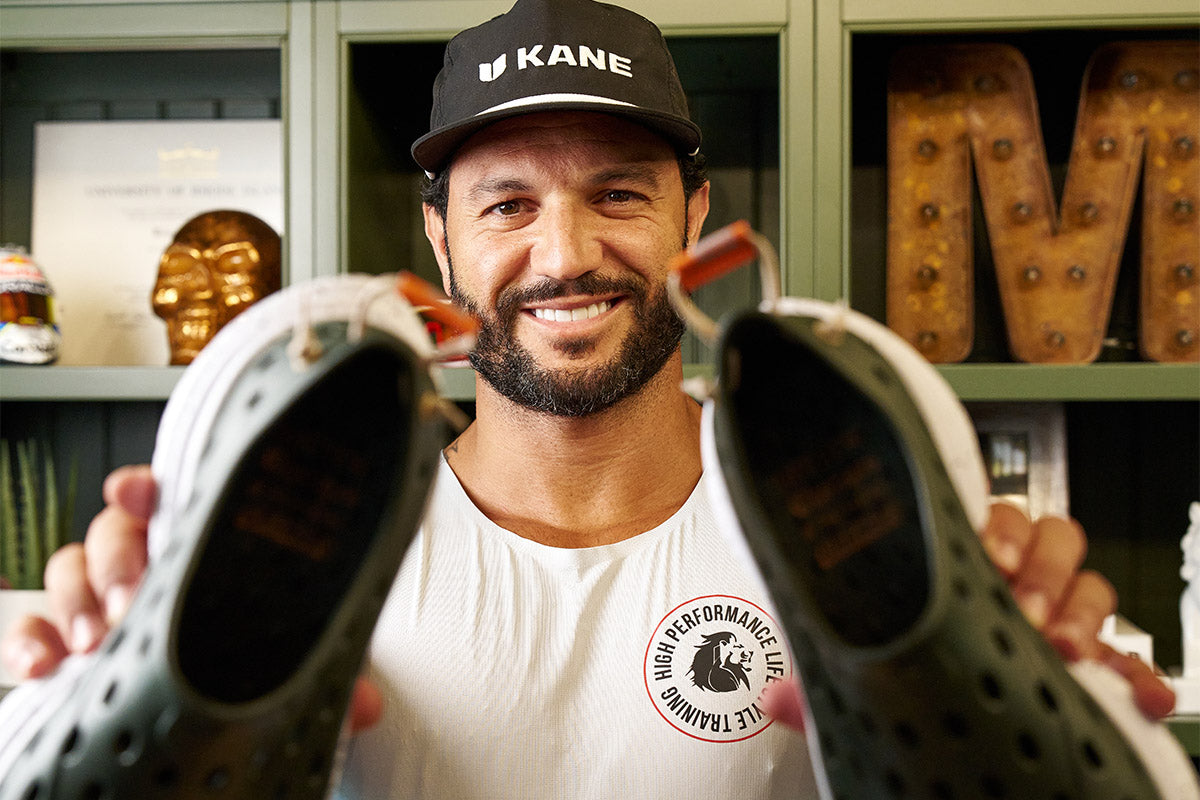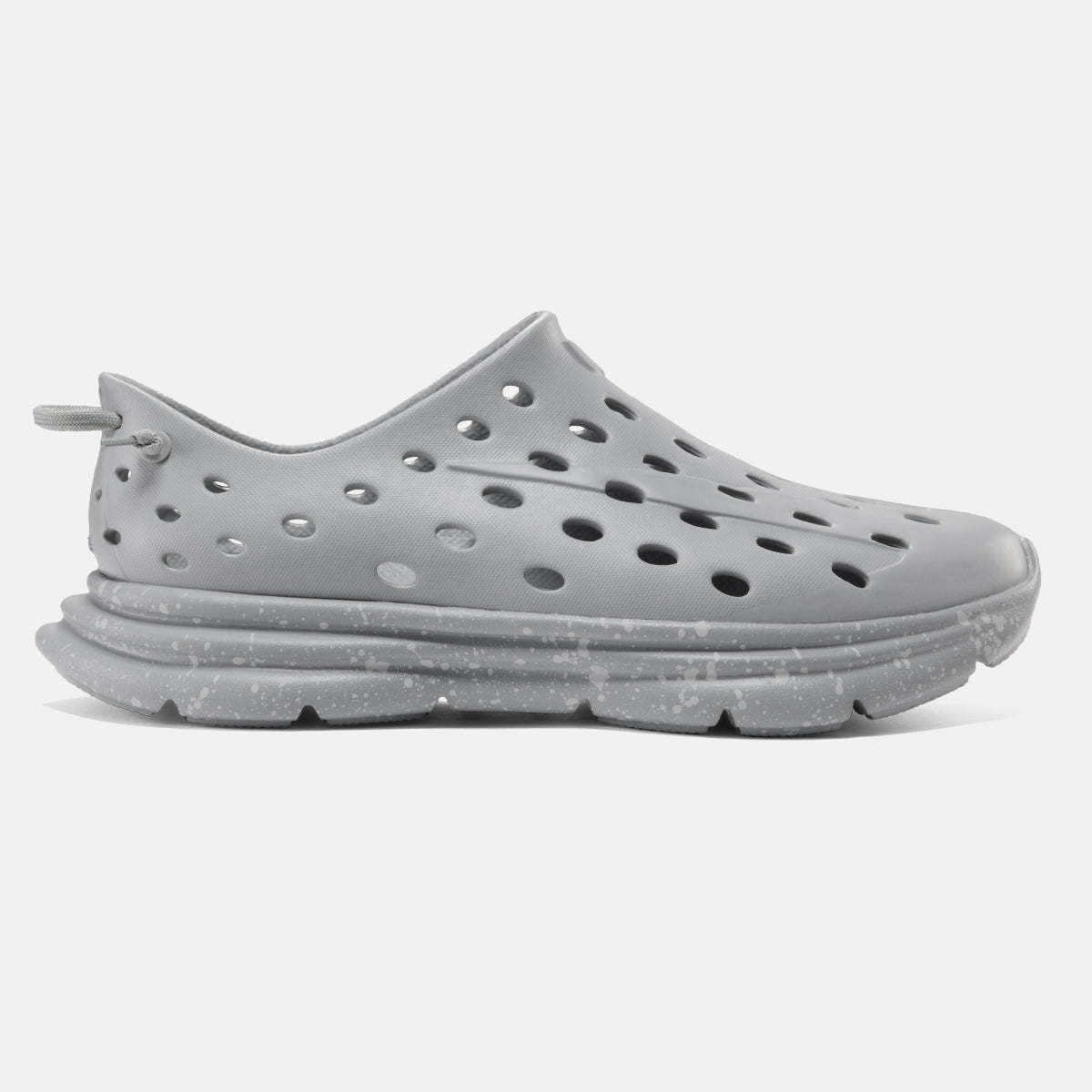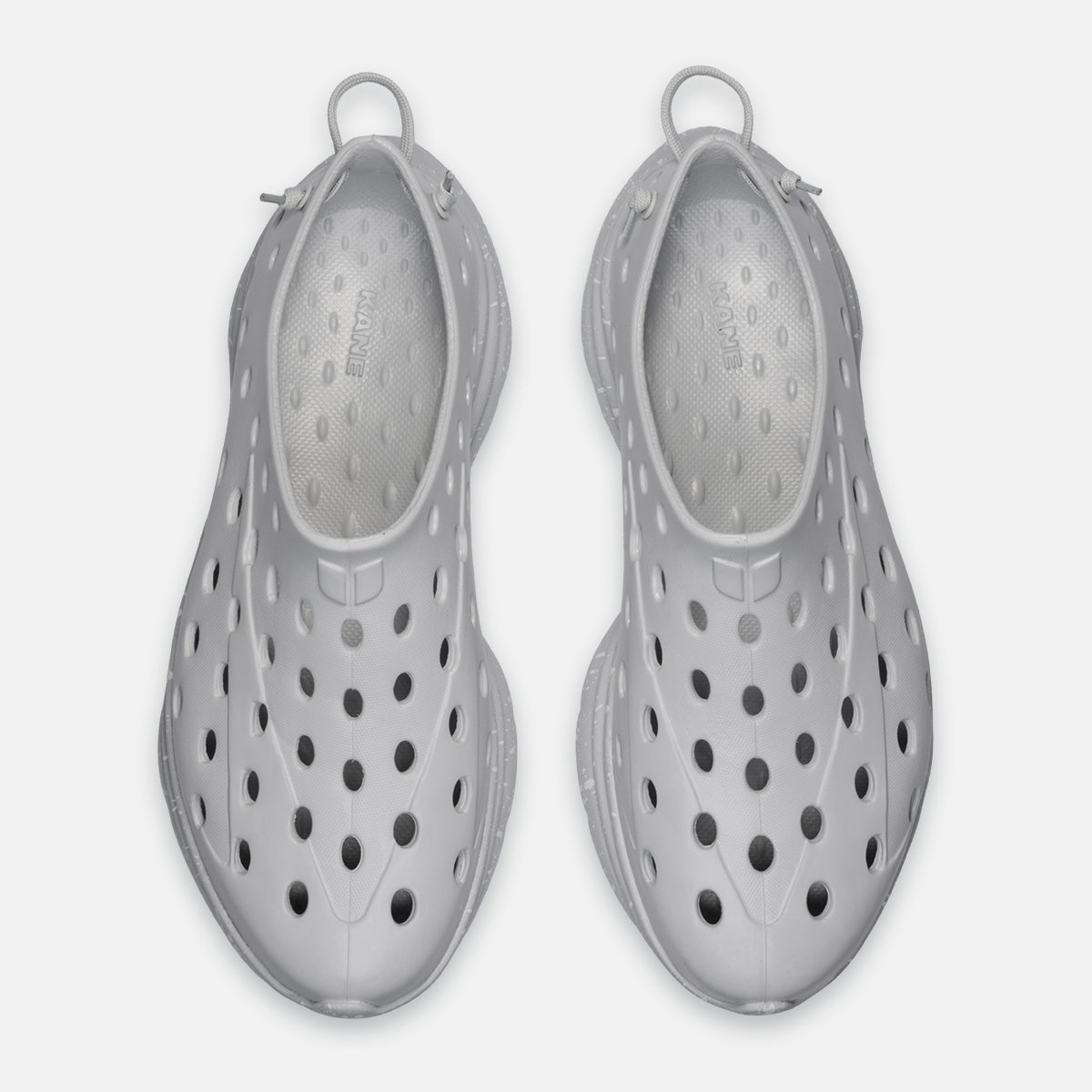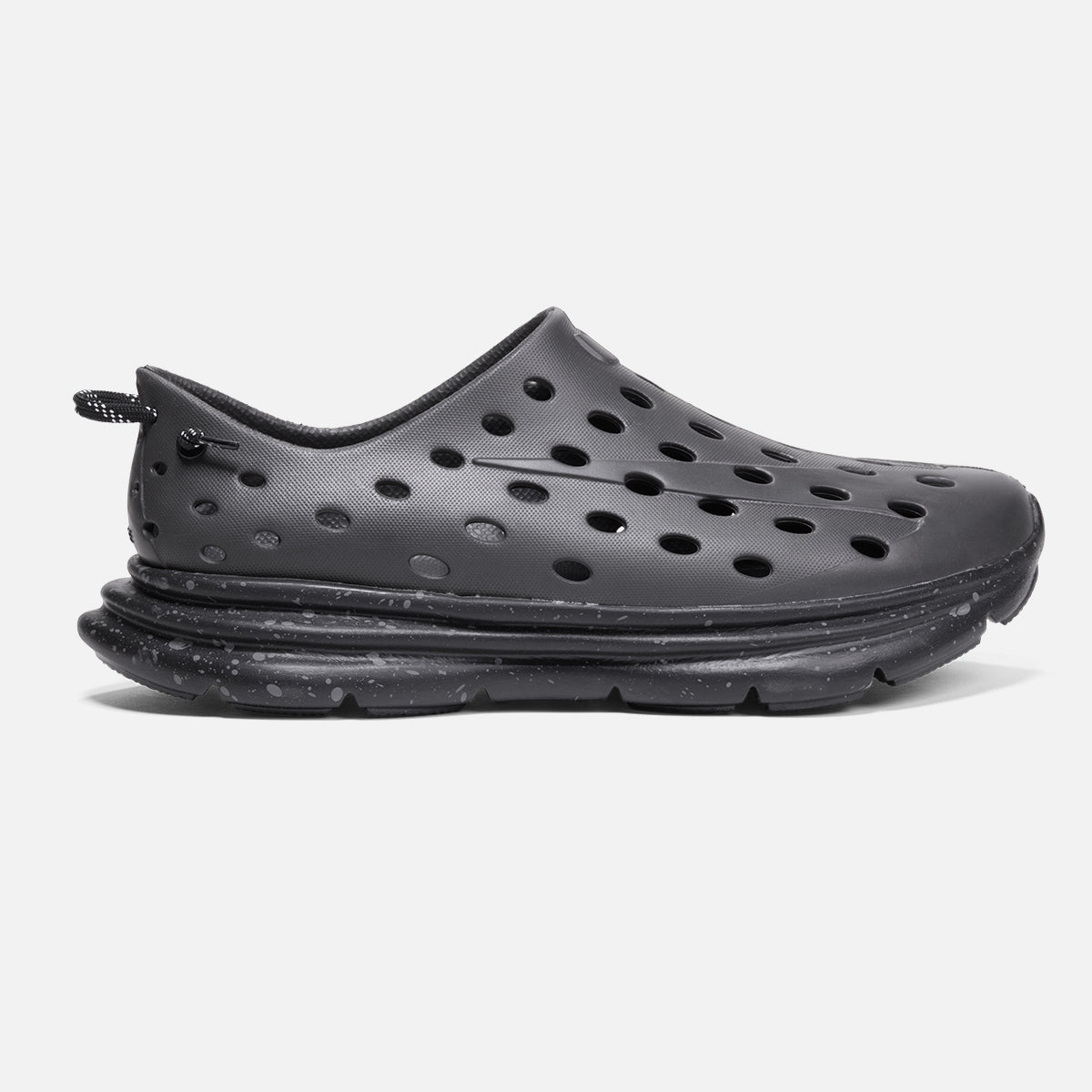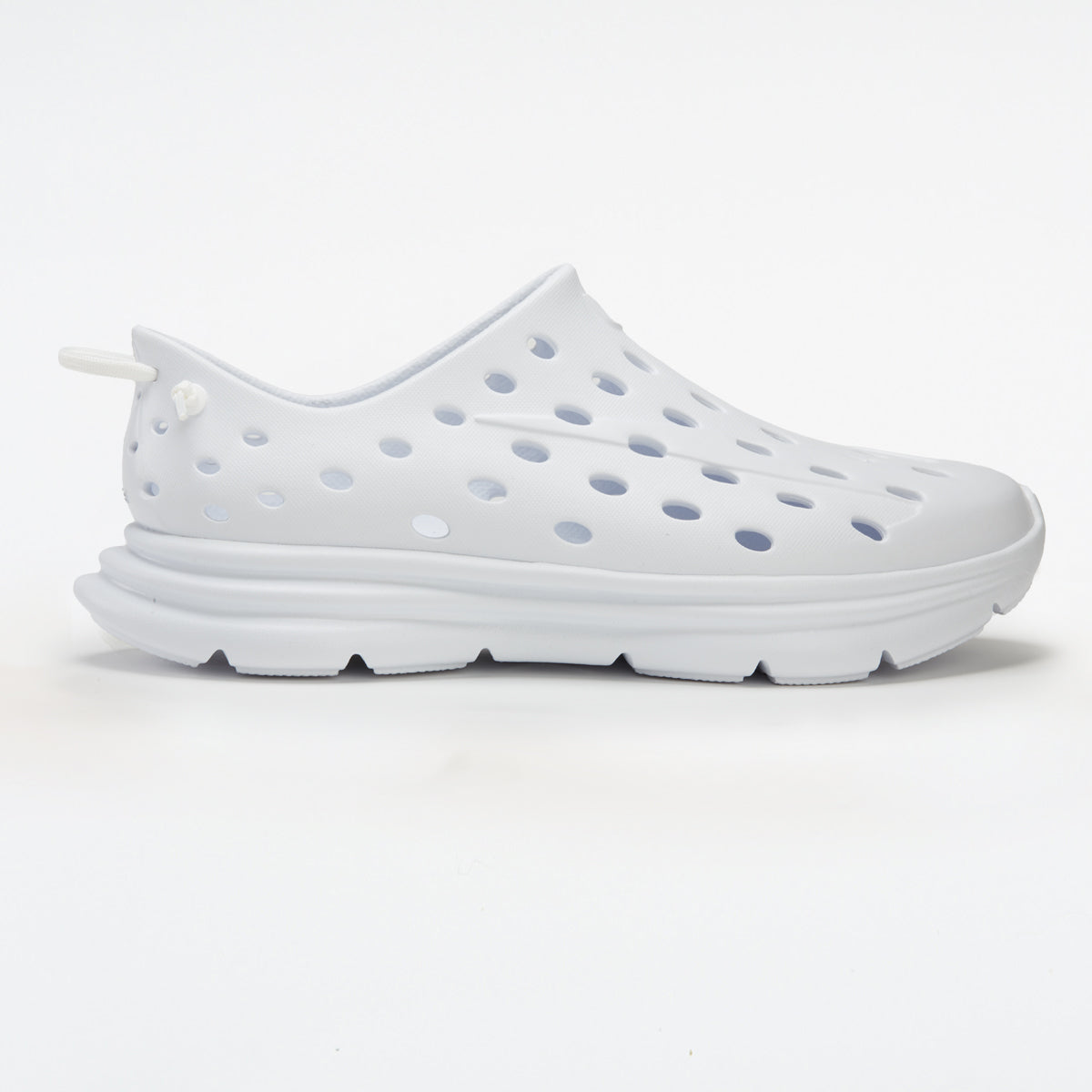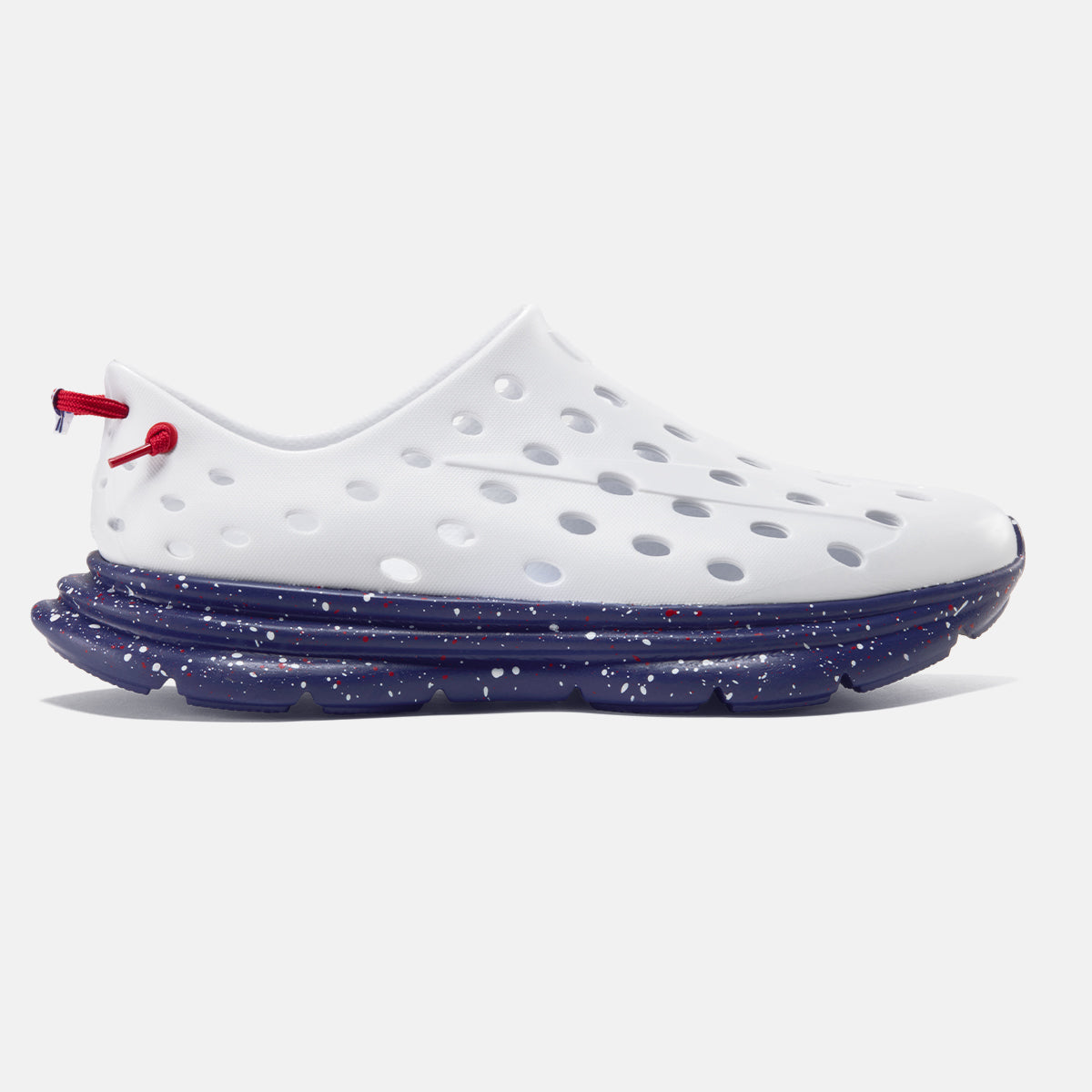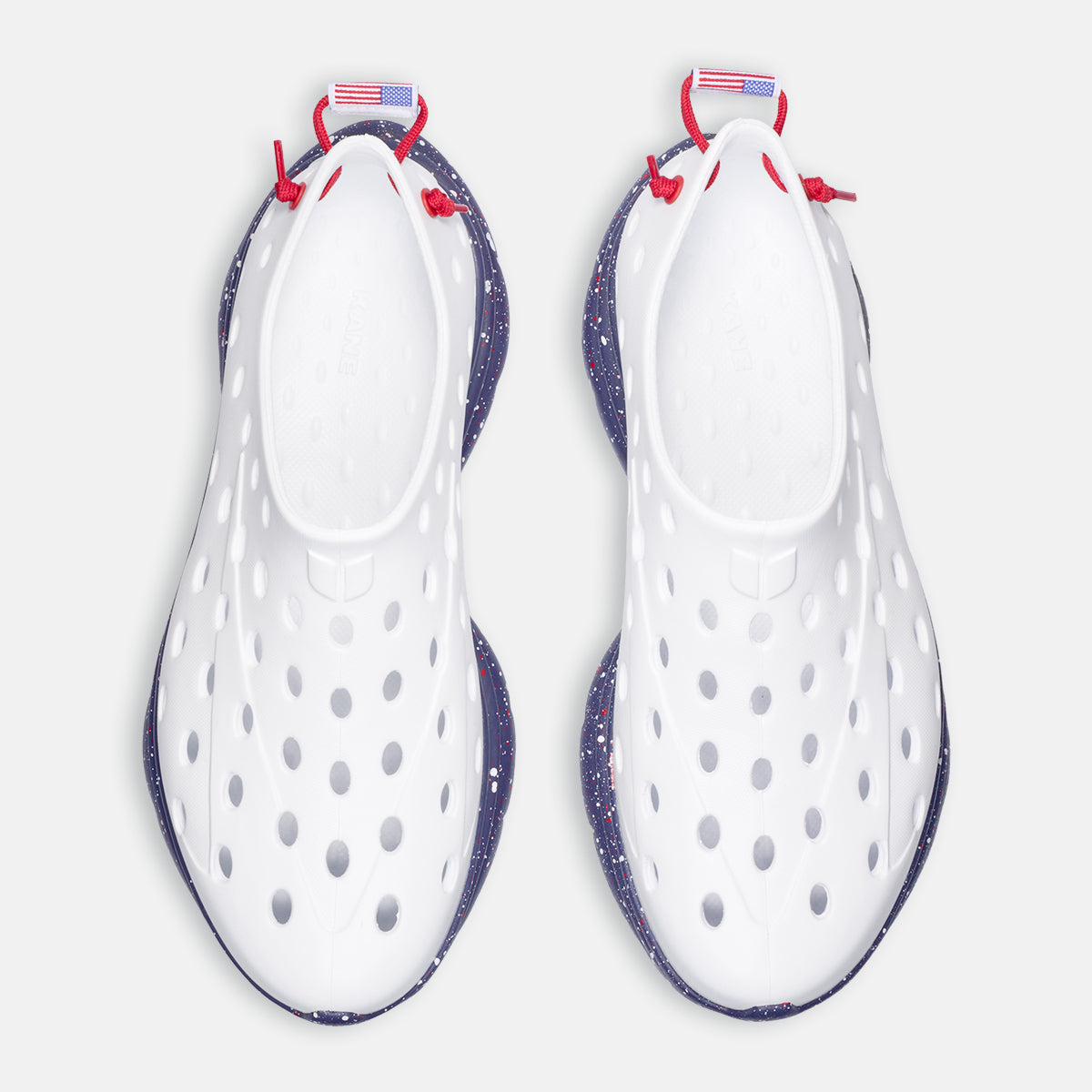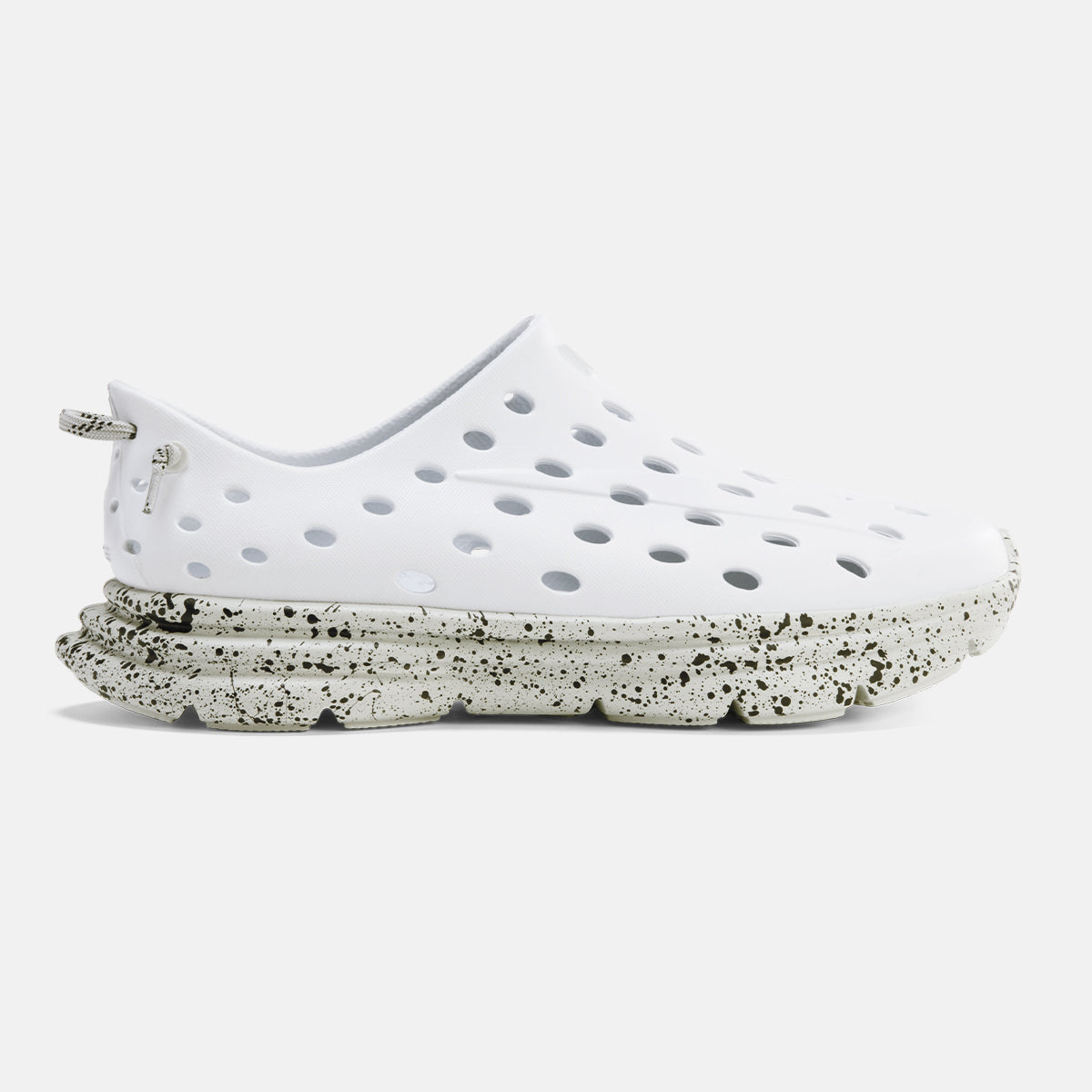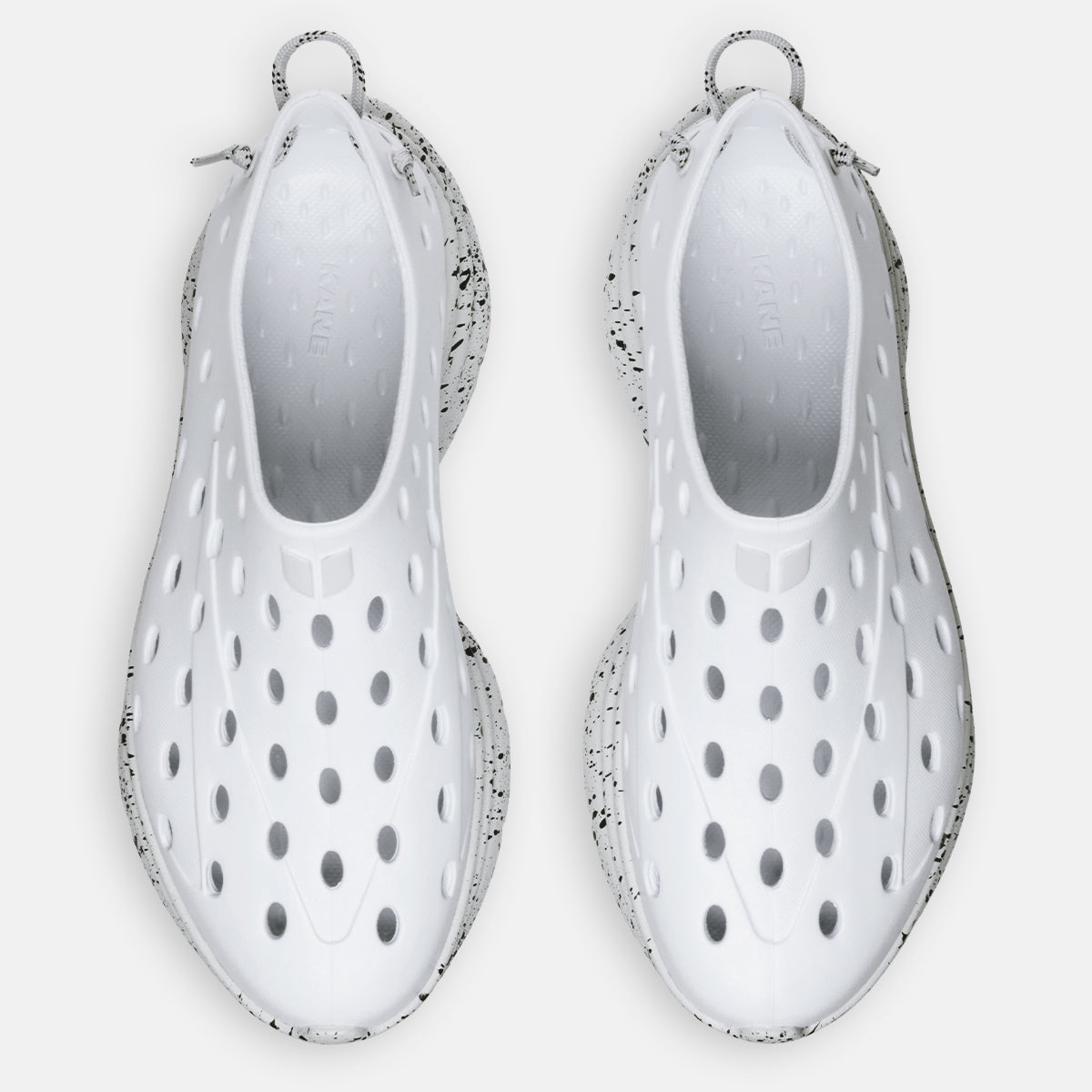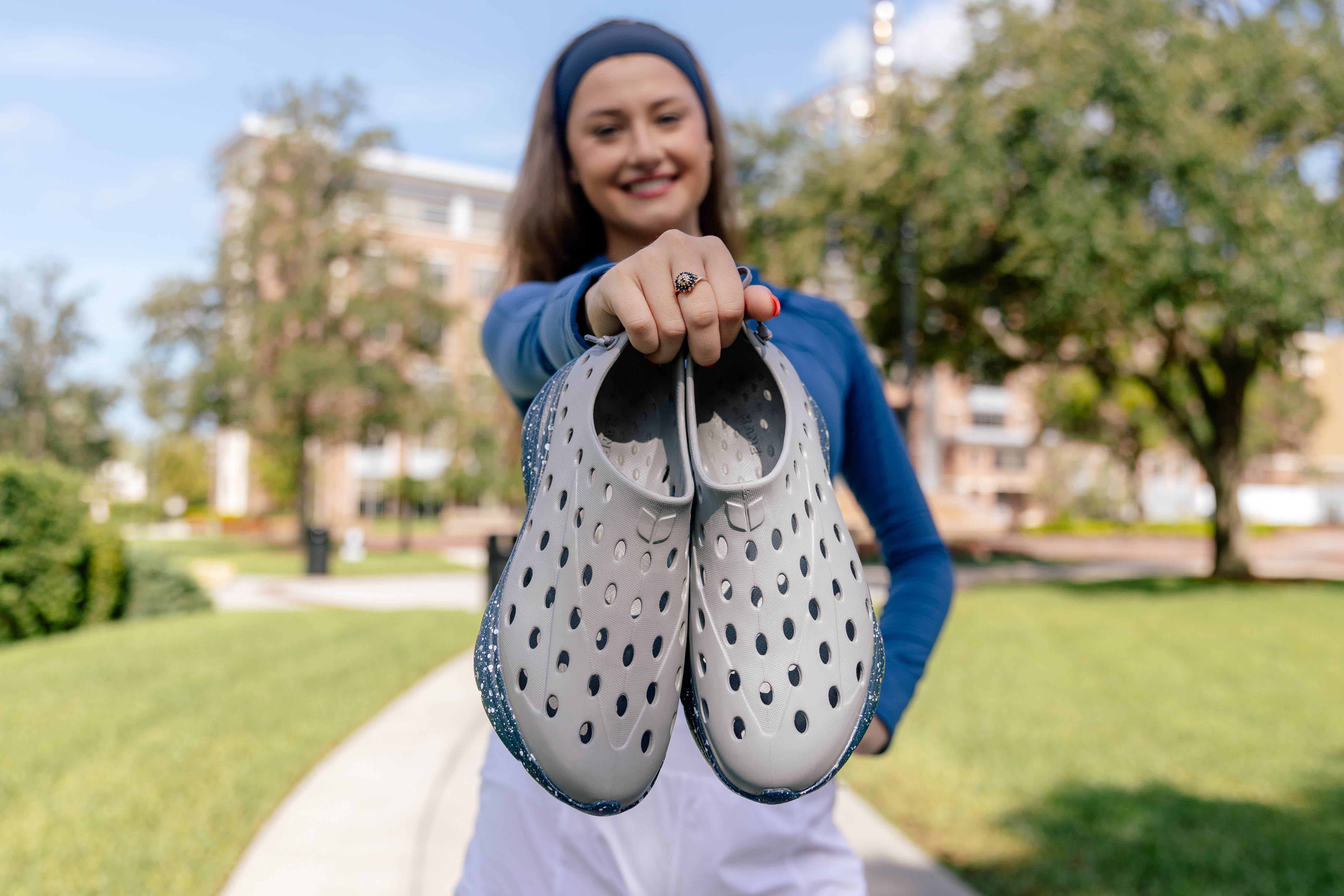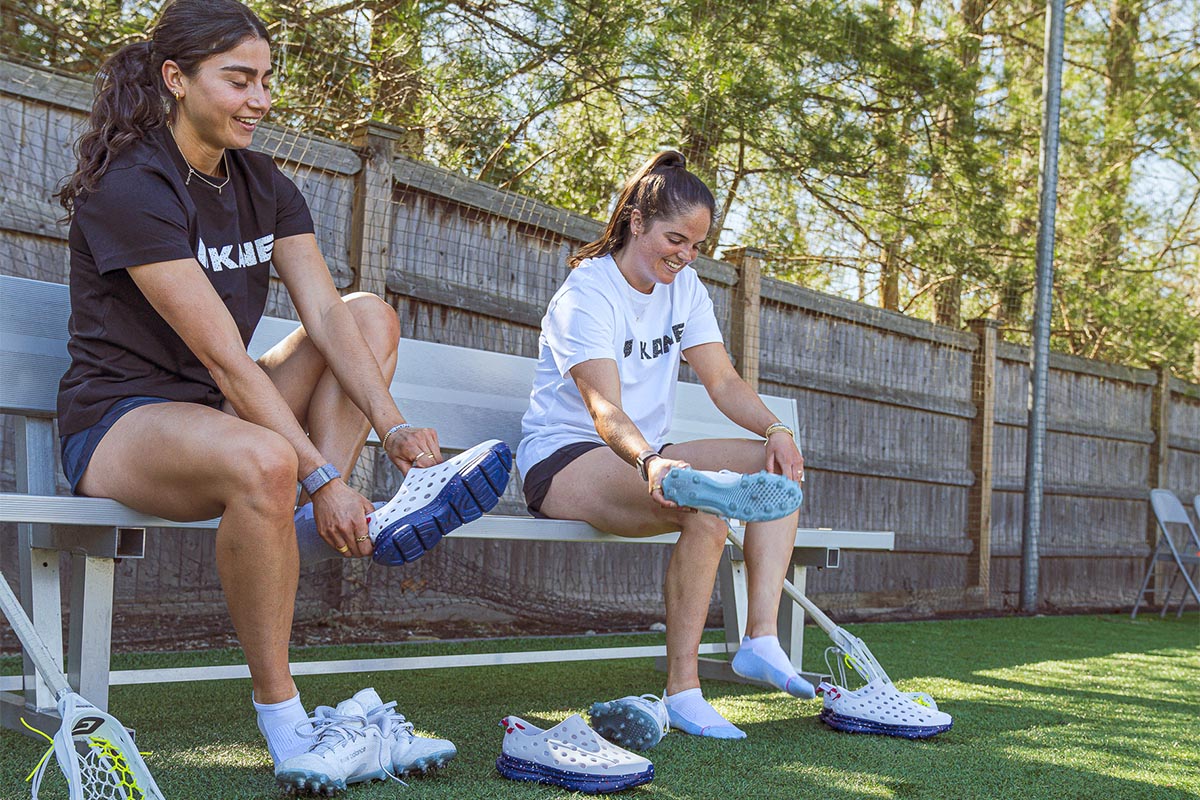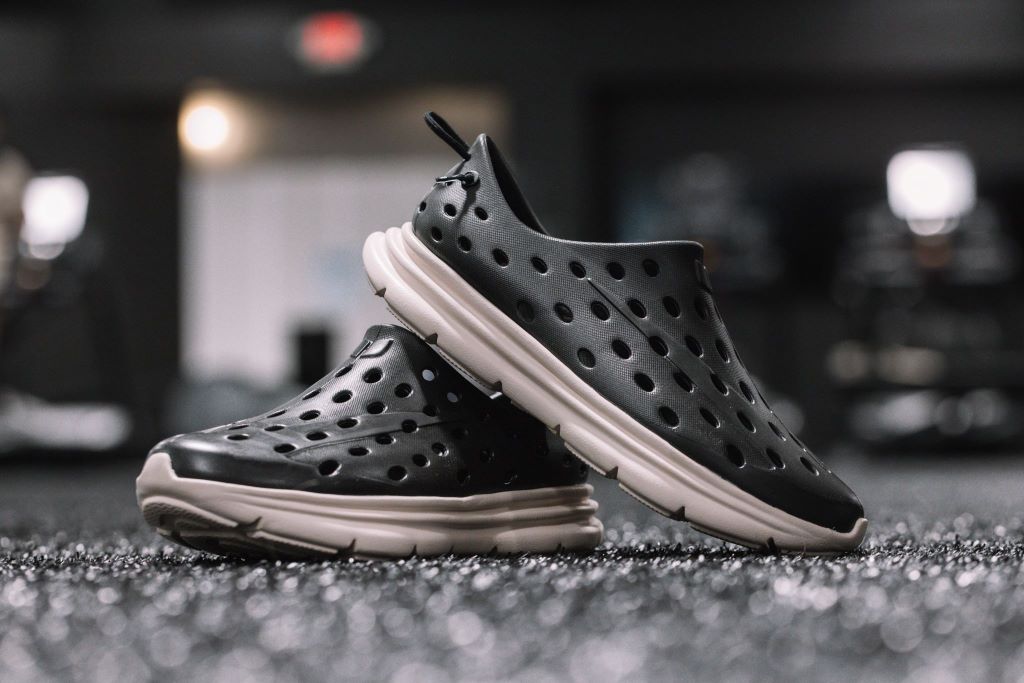The lifespan of walking shoes can vary depending on several factors, including the quality of the shoes, the frequency and intensity of use, and the wearer's walking style.On average, a good pair of walking shoes can last between 300 to 500 miles (480 to 800 kilometers) of walking. However, this is just a general estimate, and individual experiences may vary.
It's important to note that walking shoes will gradually wear out. Over time, the cushioning and support they provide will start to diminish. As a result, paying attention to the condition of your walking shoes and replacing them when you notice signs of excessive wear or when they no longer provide adequate support is recommended.
4 signs your walking shoes are on their last legs
When your shoes are worn out they’re sometimes referred to as “dead shoes.” Wearing dead shoes can increase the risk of foot-related problems and discomfort. Here are a few signs that indicate it may be time to replace your walking shoes:
Visible wear and tear
Check the outsole for significant signs of wear, such as smooth or bald areas. Inspect the midsole for compression or loss of cushioning.
Uneven wear of the sole tread pattern
If the sole tread pattern on your shoes is worn unevenly, it can affect your gait and potentially lead to discomfort or injury.
Reduced support and stability
If you start to feel less support or stability in your running or walking shoes, such as increased foot or ankle pain or a decrease in shock absorption, it may be a sign that they have worn out and it's time to buy new shoes.
Persistent discomfort or pain
If you experience persistent foot, ankle, or leg pain during or after walking, it could indicate that your shoes are no longer providing the necessary support and cushioning.
Remember that it's always a good idea to consult with a podiatrist or footwear specialist who can assess your individual needs and provide personalized recommendations regarding the lifespan of your walking shoes.
Or try these 2 simple tests if you’re unsure
Still not certain if your running shoes, athletic shoes, or walking shoes need to be replaced? Here are two simple tests that should give you a definitive answer:
Test #1: The bend test
Hold the shoe at both ends and gently bend it. A worn-out shoe will be more flexible and easily bendable compared to a shoe with good support. If you notice excessive bending or the shoe folds in half easily, it may be an indication that the midsole has lost its integrity.
Test #2: The tread wear test
Check the tread pattern on the outsole of the shoe. If the tread is significantly worn down or if the pattern is no longer visible, it may be time for a replacement. Uneven wear patterns can also indicate problems with your gait or shoe fit.
Tips to help prolong the lifespan of your walking shoes
Even with proper care, walking shoes will eventually wear out and need to be replaced. It's essential to monitor the condition of your shoes and replace them when they no longer provide adequate support or show significant signs of wear and tear.
However, there are things you can do to prolong the lifespan of your walking shoes and ensure they provide optimal support and comfort, here are some tips to keep in mind:
Rotate your shoes
Alternate between multiple pairs of walking shoes. This allows each pair to have ample time to dry out and regain their shape between uses, reducing moisture-related damage and extending their overall lifespan.
Avoid excessive moisture
Keep your walking shoes as dry as possible. Moisture can cause the materials to break down faster and lead to unpleasant odors. If your shoes get wet, stuff them with newspaper or use a shoe dryer to absorb moisture. Also, consider using moisture-wicking socks to help keep your feet dry.
Untie and loosen laces properly
When taking off your shoes, untie the laces and loosen them before removing your feet. This prevents unnecessary stress on the shoe's structure and helps maintain the shape of the shoe over time.
Use your shoes for their intended purpose
While it may be tempting to wear your walking shoes as everyday shoes or for activities other than walking, such as running or playing sports, it's best to use them specifically for walking. Different activities place different demands on footwear, and using your shoes appropriately will help them last longer.
Store shoes properly
When you're not wearing your walking shoes, store them in a cool, dry place on a flat surface away from direct sunlight. Avoid leaving them in hot or humid environments (like your gym bag), as this can cause the materials to degrade more quickly.
Clean them regularly
Regularly clean your walking shoes to remove dirt, dust, and debris that can accumulate over time. Follow the manufacturer's guidelines for cleaning instructions, as different materials may require specific care methods. Typically, you can use a soft brush or cloth with mild soap and water to clean the exterior of the shoes. (Note: It is not recommended that you wash walking shoes or running shoes in a washing machine.) Allow them to air dry naturally after cleaning.
Replace insoles if necessary
If the insoles of your walking shoes become worn out or lose their cushioning, consider replacing them with new insoles. This can help restore comfort and support in your walking shoe, potentially extending the lifespan of the shoes.
FAQs about replacing running shoes, walking shoes, or athletic shoes
How often do you replace walking shoes?
The frequency of replacing walking shoes can vary depending on several factors, including the quality of the shoes, the amount of walking you do, your walking style, and individual preferences. As a general guideline, most athletic shoes and walking shoes will last between 300 to 500 miles (480 to 800 kilometers) of walking.
For someone who walks an average of 3 to 4 miles (4.8 to 6.4 kilometers) per day, this means that walking shoes may need to be replaced approximately every 4 to 6 months. However, if you walk more frequently or cover longer distances, you may need to replace your shoes more often.
It's important to pay attention to the condition of your walking shoes and look for signs of excessive wear, loss of support, or discomfort. If you notice significant wear on the outsole, compression in the midsole, or if your worn-out shoes no longer provide the cushioning and support they once did, it's a good indication that it's time to replace them.
Remember that the lifespan of walking shoes is not solely determined by the number of miles walked but also by the wear and tear they experience. Factors like the terrain you walk on, your walking technique, and your body weight can affect how quickly shoes wear out.
How do I know if my walking shoes need replacing?
Knowing when to replace your walking shoes is important to maintain proper support, and comfort, and prevent potential foot problems. Here are some signs that indicate it may be time to replace your walking shoes:
Visible wear and tear
Inspect the outsole of your shoes for signs of significant wear, such as smooth or bald areas. Check the midsole for compression or visible breakdown of cushioning. Additionally, look for any visible tears, cracks, or separation in the shoe's upper part.
Decreased cushioning and support
You deserve a comfortable pair of workout shoes! If you start to feel less cushioning or support in your shoes (especially arch and heel support), it could mean that the midsole has worn out. You may experience increased foot or joint pain, discomfort, or a lack of shock absorption during walking.
Uneven wear patterns
Examine the tread on the outsole of your shoes. If you notice uneven wear, with some areas more worn down than others, it could indicate problems with your gait or shoe fit. This may require replacing your old shoes or exploring options with better stability or support.
Persistent foot or leg discomfort
If you experience ongoing foot pain (including arch and heel pain), shin splints, or other discomfort during or after walking, it could be a sign that your shoes are no longer providing adequate support or cushioning. Replacing them with a new pair may alleviate these issues.
Increased instability or lack of grip
If you notice a decrease in traction or grip on different surfaces, it could be a sign that the outsole of your shoes has worn down. This can affect your balance and increase the risk of slips or falls.
Odor or moisture retention
If your shoes consistently retain moisture or develop an unpleasant odor, despite regular cleaning and drying, it may indicate that the materials have deteriorated. This can lead to discomfort and hygiene issues.
Age and usage
Even if your walking shoes do not exhibit visible signs of wear, it's generally recommended to replace them after a certain period, typically around 6 to 12 months, depending on the frequency and intensity of use. Over time, the materials in the shoes degrade, and their ability to provide support diminishes.
How long should good walking shoes last?
Good walking shoes, when properly cared for and used in appropriate conditions, can last anywhere from 300 to 500 miles (480 to 800 kilometers) of walking. However, it's important to note that the lifespan of walking shoes can vary depending on several factors:
Quality of the shoes
Higher-quality walking shoes made with durable materials and construction techniques tend to have a longer lifespan than lower-quality shoes.
Frequency and intensity of use
Regular walkers who cover longer distances or engage in intense walking activities may wear out their shoes more quickly compared to occasional or leisure walkers.
Walking style and gait
Individual walking styles can affect how shoes wear. Some people may put more stress on specific areas of the shoes, leading to accelerated wear and tear.
Terrain and walking surface
Walking on rough or abrasive surfaces, such as trails or concrete, can cause shoes to wear out more quickly compared to walking on softer surfaces like grass or treadmills.
Body weight
Heavier individuals may experience faster wear on their shoes compared to lighter individuals due to the increased impact forces on the shoes.
It's important to pay attention to the condition of your walking shoes and listen to your body. If you start experiencing discomfort, or pain or notice signs of significant wear and tear, it may be time to consider replacing your walking shoes, even if you haven't reached the mileage range mentioned above.
Remember that the guidelines provided are general estimates, and individual experiences may vary. Regularly inspect your shoes for signs of wear, loss of support, or decreased cushioning, and use your judgment to determine when it's time to replace them.



































